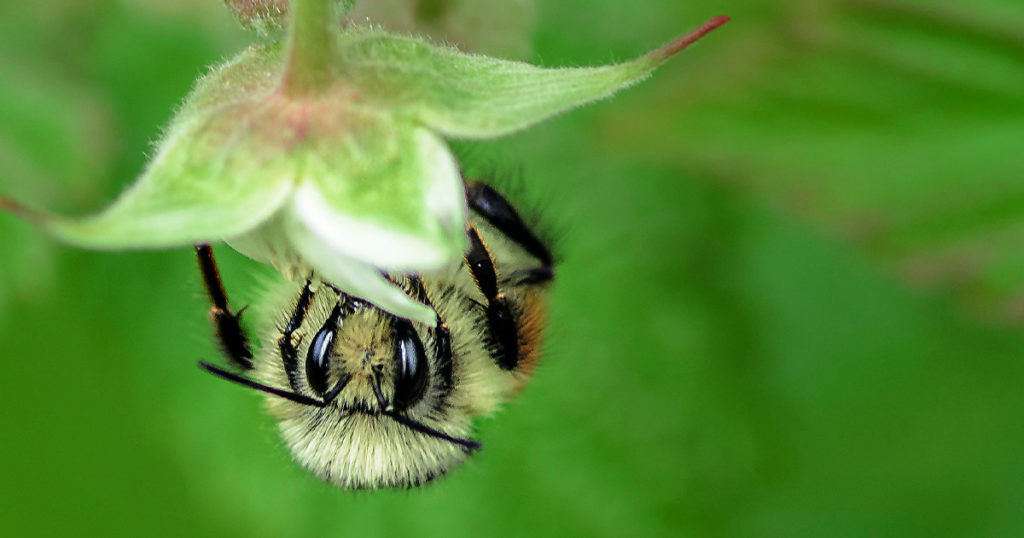
Ah summer. The time for lazy afternoons spent dozing in a hammock, lulled to sleep by the quiet buzz of bees hard at work collecting nectar and pollen from the first flowers of the year. It sounds idyllic, but unfortunately, such afternoons are falling increasingly silent. As uniformly green lawns replace patchworks of dandelions and clover, the bees are disappearing.
Pollinators Like Bees are Important
The ecological and economic value of pollinators can’t be overstated. Pollination is an essential piece of the reproductive cycle for close to 75% of all flowering plants, including more than two-thirds of crop species. Although there are many animals that help with pollination, bees are one of the most reliable and efficient sources of pollination since they don’t waste pollen by spreading it to different species.
Sadly, habitat loss, pesticides and introduced disease have contributed to a significant decline in bee numbers. For example, more than a quarter of all North American bumble bees face some risk of extinction. Fortunately, people across the country and around the world have begun to take notice and act.
Read about the rusty-patched bumble bee, a protected bee species in the Midwest United States.
On a recent campus visit with my youngest, our tour guide pointed to their university’s large pollinator garden and proudly announced that the campus was the first Bee Campus affiliate in the state of Wisconsin. What is a “Bee Campus” you might ask (I know I did)? It is an initiative of the Xerces Society for Invertebrate Conservation that offers a framework for campuses to conserve native pollinators by increasing the availability of native plants and nesting sites while also reducing or eliminating pesticide use. Colleges and universities that join the program commit to these conservation efforts, and campus faculty, staff and students work together to improve their campuses for native pollinator species. As part of these efforts, campuses might to commit to the growing “No Mow May” movement.
The What and Why of “No Mow May”
In 2019, a wild plant conservation charity in the United Kingdom called Plantlife launched the “Every Flower Counts” project to promote wildflower diversity and support pollinator populations. The project asked citizen scientists to leave all or part of their lawn uncut for the month of May as well as delay or stop applying pesticides and herbicides. In its first year, Plantlife saw a dramatic increases in bee numbers in the lawns that participate, with 80% of the lawns supporting approximately 400 bees per day, and the remaining 20% supporting as many as 4000 bees per day.
The following year, Appleton, Wisconsin adopted the approach as “No Mow May” with the idea that these actions—or inactions—would allow many species of flowering plants (like dandelions and red clover) a chance to grow and flower, providing much-needed nourishment to bees and other pollinators in the early spring period when many other flowering plants and trees aren’t yet blooming. Early results from that year suggest that the approach works. Participating lawns saw a fivefold increase in bee abundance and a threefold increase in bee diversity compared to nearby land that was mowed regularly.
Creating A More Bee-Friendly Yard
Bees are important to all of us, but maybe you aren’t ready to leave your lawn untouched for the month of May. There are other things you can do to make your yard more bee friendly. Mow less frequently or leave a small area of your lawn unmown. You can also delay or skip herbicide and pesticide applications and think about expanding your landscaping to include native pollinator-friendly species. Finally, if you have the space (and the inclination), bee keeping can offer its own sweet reward, as our French Branch members can attest to.
Fun Facts about Bees and Other Pollinators
This year, World Bee Day falls on Friday, May 20. The weekend might be the perfect time to plant some pollinator-friendly flowers, or maybe skip the mowing and go for a walk in a local park instead.
Although invertebrates such as bees and butterflies are what everyone thinks of when we think of pollinators, and they undoubtedly deserve most of the credit, they don’t do it alone. A lot of animals also do their part including bats, lizards and small mammals such as honey possums and sugar gliders. The tittle of largest pollinator goes to the black and white ruffed lemur on the island of Madagascar. These nimble creatures are the primary pollinators of the travelers palm. They are also one of the most endangered mammals on earth.
Get Involved
Whether it is planting a pollinator garden, not mowing our lawn, or getting involved in protecting important habitat spaces, we can all help protect the pollinators of our world.
